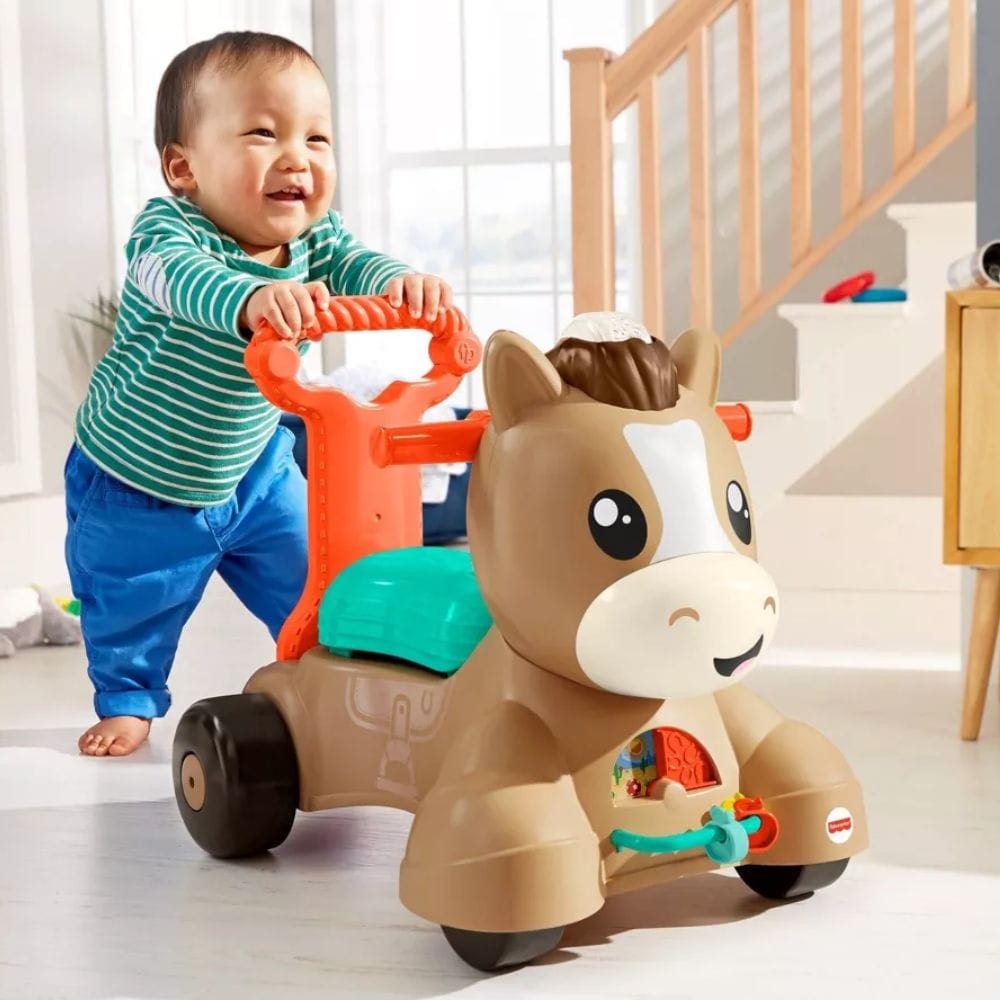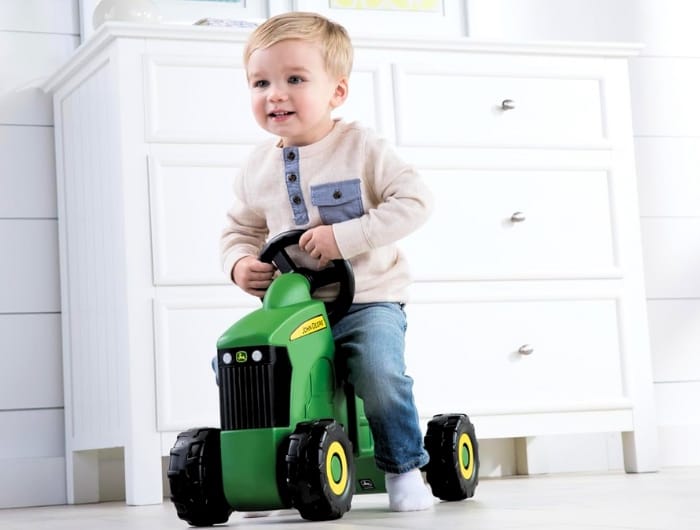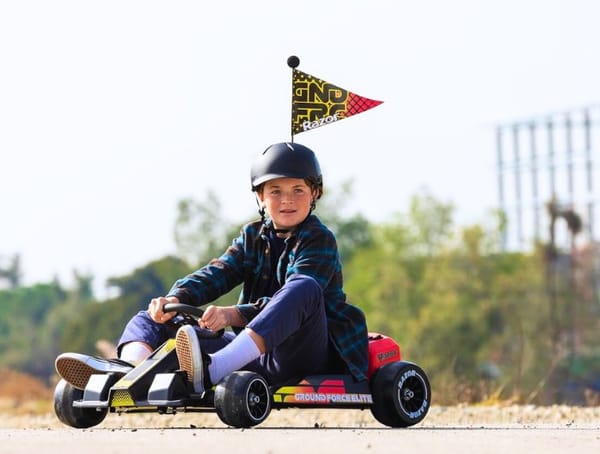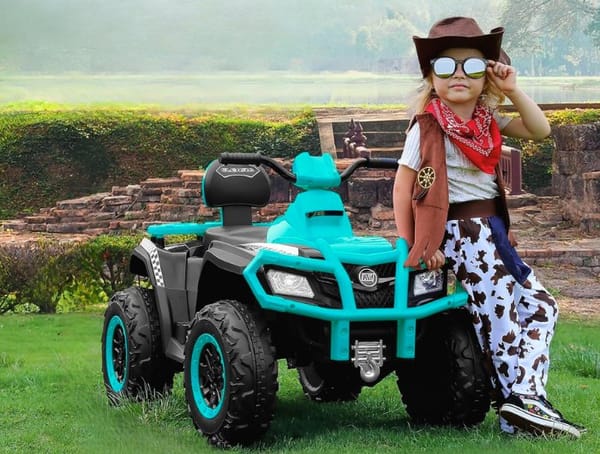Read on for a deeper more detailed answer.
Let's talk about ride on toys for 1 year olds. You've probably seen them in every toy store - those cute little vehicles that kids can sit on and move around.
There are so many different types of ride on toys available, like balance bikes, pedal-powered toys, and even electric cars. But you might be wondering, "When can my baby start using these?".
What Are Ride-On Toys?
Ride-on toys are essentially any toy that your child can sit or stand on to move around. The best ride on toys for 1 year olds come in all shapes and sizes, from simple push-along toys for the smallest riders to pedal-powered tractors for the more adventurous toddlers.

There's a ride-on toy to match every stage of your child's development and every parent's safety comfort level.
What Age Can Babies Use Ride-On Toys?
From the moment they're born, babies are developing gross motor skills. These are the skills we use to move around and balance.
When your baby can sit up without help, usually around six months, they're showing you they're ready to start exploring the world in new ways.
Babies and toddlers can start using ride-on toys as soon as they have good core strength and are steady on their feet. For some kiddos, this might be earlier than others. But don't worry, there are also ride-on toys designed to help them get to this point.
Most experts agree that the best child's age range for introducing other ride on toys is around one year old. At this age, children are typically more stable on their feet and may have begun to walk independently.
They can start exploring with toys that help enhance their motor skills and offer a sense of independence. A ride-on toy can provide a fun, engaging way to boost their balance, coordination, and strength.
Starting with a four-wheeled toy that's low to the ground and easy to hold onto is usually a good idea for little ones. By around 18 months to 2 years, a balance bike can be introduced for some extra fun.
Just make sure it's light and low enough for them to sit comfortably with their feet touching the ground.
And of course, rocking toys are always a hit, especially if you're short on space for indoor play.
Remember, the most important thing is to follow your child’s lead. If they show interest in a ride-on toy, it might be time to give it a go. And if they're not quite ready, that's okay too! There's plenty of time for them to hit the open road (or living room floor!).
Understanding the Age Recommendations for Ride-On Toys
Age recommendations for ride-on toys are not just numbers on a box. They're based on safety and developmental considerations, and it's essential to follow them.
Push toys are suitable for babies as young as six months old, while sit-and-ride toys are ideal for babies between nine months and three years old. Push toys support your baby’s first steps and encourage walking.
Pedal-powered toys are better suited for toddlers and preschoolers between two and five years old. Sit-and-ride toys help develop balance and coordination, while pedal-powered toys improve leg strength and coordination.
Benefits of Ride-On Toys for Baby’s Development
Now, you might ask, "Why should I consider a ride-on toy for my baby?" Well, there are plenty of benefits of ride on toys!
Firstly, ride-on toys are great for developing motor skills. Your child will learn to coordinate their movements, balance, and even steer.
As they grow older, they'll use these skills in everything from walking to writing, making ride-on toys a fun stepping stone in their development.
Secondly, ride-on toys help boost confidence. Yes, you read that right! As your child masters the art of riding, they'll develop a sense of independence and confidence that is invaluable in life.
And lastly, let's not forget the physical benefits. Riding is a fantastic way for your child to stay active and healthy. Plus, it's so much fun; they won't even realize they're exercising!
Safety Considerations
Safety first, always! When it comes to ride-on toys, there are a few key safety features to keep an eye out for. Stability is crucial - you don't want a toy that easily tips over. Look for toys with sturdy construction and stability to prevent tipping over.
For motorized ride-ons like electric cars, look for features such as seat belts and parental remote controls. And remember, no matter how safe the toy is, supervision is always necessary when your little one is at play.
Choosing the Best Ride On Toys for Babies
Now, onto the fun part - choosing a ride-on toy for your baby. The best toy is, quite simply, the one that matches your child's developmental stage and interests.
If your little one is just starting to walk, a push toy could be an excellent choice. They can hold onto it for support while building those crucial motor skills.
For older toddlers who've mastered walking, pedal-powered toys or a balance bike can be a hit. These not only offer loads of fun but also help with coordination and balance.
And for the adventurous older children, an electric car could be just the ticket, letting them zoom around the backyard under your watchful eye.

Wrapping Up
In conclusion, the right time to introduce ride on toys depends on your child's age and developmental stages. Always consider safety features and ensure the toy is age appropriate. Remember, every child develops at their own pace, so don't rush it.
Listen to your instincts, observe your child's interests and abilities, and you'll find the perfect ride-on toy in no time. In the end, it's all about creating joyful memories while helping your child grow and learn.
Thank you for reading Mother Bear Reviews, your favorite parenting blog!









